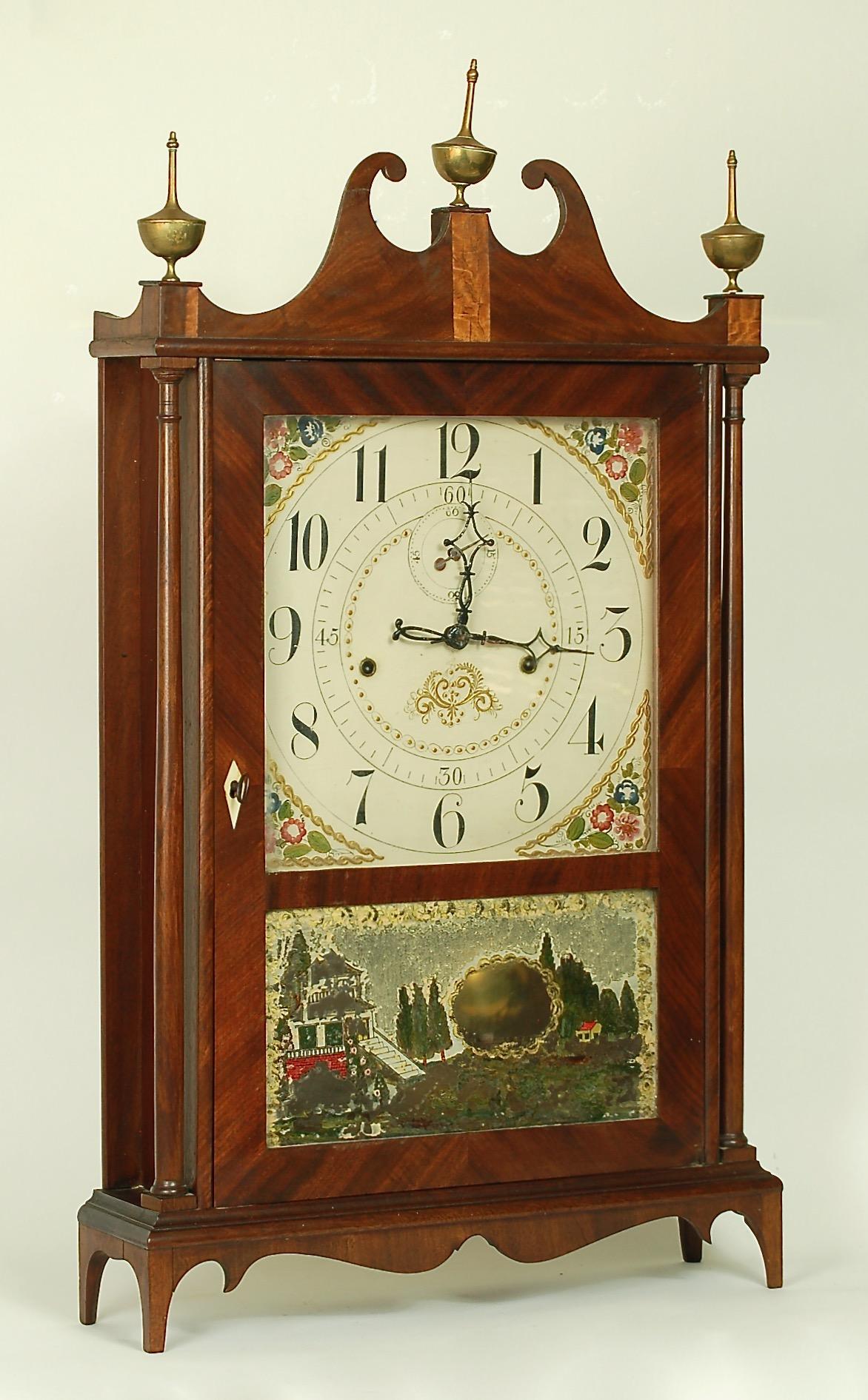Pillar-and-scroll clock
Plymouth, Connecticut
1818-1822
Maker
Seth Thomas (1785-1859)
Measurements
30 in x 17-1/4 in x 4-3/8 in (including finials)
Materials
Mahogany* (case), maple (veneers); red oak* (middle backboard), tulip poplar (backboards and interior fit-out), white pine* (glue blocks), cherry (movement), brass (finials, some movement parts), glass
Credit Line
Historic Odessa Foundation, The David Wilson Mansion, Inc.
Accession Number
1971.598
Inscription
“Patent Clocks, / Made and sold by / SETH THOMAS; / And warranted if well used. / DIRECTIONS / For setting up and regulating said clocks. [detailed directions] / Plymouth, Connecticut.” is printed on a paper label pasted onto the inside of the backboard.
Condition Notes
The reverse-painting-on-glass in the lower panel of the case door is delaminating in many places. The scrolled end of the left pediment scroll split along a grain line and has been glued.
Provenance
Bequest of Dr. and Mrs. J. Newberry Reynolds to The David Wilson Mansion, Inc. in 1942.
Comments
Pillar-and-scroll shelf clocks, so named for the scrolled pediment and colonnettes at each front corner of the case, were inexpensive, accurate, and stylish. This example features figured maple veneers, book-matched and figured mahogany boards in the pediment, an ivory key escutcheon, a chime, and a reverse-painting-on-glass scene of an exotic Chinese temple landscape.
The thirty-hour wood movement (cherry wheels and a single brass escape wheel) was patented by Eli Terry (1772-1852) in 1816 and licensed to Seth Thomas in 1818. Thomas had worked for Terry since 1807. Part of the redesign of these early clock movements included a short (9.8 inch, half-second) off-center pendulum; the pendulum bob may be seen through the off-center aperture in the painted glass panel.

